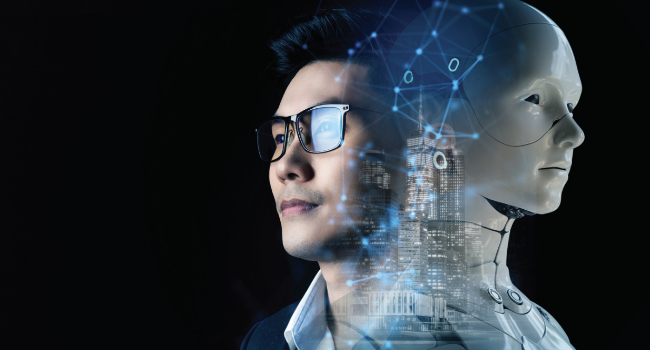
Where AI Meets Human Judgment
- By Dr. Barry Norton
- Sep 05, 2025
Artificial intelligence is everywhere these days. It is driving business growth, shaping consumer experiences, and showing up in places most of us never imagined just a few years ago.
But one of the most powerful ways AI is changing our world is within video security applications. For years, cameras and monitoring systems have been tools for recording what has already happened. Now, AI is shifting them into something far more valuable: systems that can highlight what matters in the moment and even point to what might happen next.
But this shift raises a big question. If machines can now recognize behaviors, spot anomalies, and forecast risks, what does that mean for the human professionals who have always made the tough calls? The answer, I would argue, is simple. AI is not replacing people. It is sharpening their judgment, helping them see more clearly and act more quickly.
Humans at the Center of AI Video Security
Think about the flood of video data coming through today’s monitoring systems. It is too much for any person to process. AI helps by turning all that raw information into structured insights: identifying people, objects, relationships, and behaviors within a scene.
Instead of staring at endless screens, operators can focus on what matters. A system might flag unusual movement in a crowd, detect a fall in a hospital corridor, or trace a vehicle’s path through a busy intersection. The operator is still in charge, but the machine has already done the heavy lifting of finding patterns and pointing out what looks out of place.
It is not about handing control over to technology. It is about giving people better tools to make faster, more confident decisions. In high-pressure environments where every second counts, whether it is a security operation center, a transit hub, or a factory floor, that kind of clarity can make all the difference.
From Reaction to Prediction
For a long time, video analytics meant basics like object detection and tracking. Useful, but the interpretation of what is happening as people and vehicles move through a monitored space is left to operators. The real shift now is toward spotting behaviors and interactions.
Advanced video analytics can tell the difference between a casual interaction and a potentially hostile one. Anomaly detection can scan entire video feeds to spot unusual situations that humans might miss.
Looking ahead, predictive analytics takes this even further. By learning how objects behave and interact over time, these systems can anticipate what is likely to happen next. In traffic management, which might mean predicting congestion before it forms. In healthcare, it could mean spotting early warning signs of a fall or a patient at risk. For security professionals, it represents a move from reacting to problems toward preventing them altogether.
That is not science fiction. It is the logical next step in a field already advancing quickly. The shift is like looking from a rearview mirror to the road ahead, where everything comes into focus sooner and with time to act.
Building Trust and Shaping the Future
With powerful technology comes a responsibility to get it right. Advanced video analytics may promise efficiency and foresight, but they also raise tough questions about privacy, consent and fairness.
If people do not trust how AI is being developed and used, its value quickly fades. That is why transparency is essential. Organizations need clear policies on what data is collected, how it is analyzed, and what decisions it influences. The quality of the training data matters too. Bias in datasets can lead to bias in outcomes.
One promising approach is the use of synthetic data. Instead of relying only on expensive and sometimes limited real-world footage, developers can generate artificial data that mimics real-life scenarios. This helps expand training sets, reduce bias, and protect individual privacy.
Trust depends on keeping humans involved. Even the most advanced systems must leave room for human judgment because context, empathy and accountability cannot be automated. People bring the nuance that algorithms lack. Without that balance, AI becomes less a partner and more a risk.
Industry-wide, frameworks like the G7 AI Code of Conduct are helping set standards for responsible AI. Following these guidelines builds trust not only with regulators but also with the people whose safety and rights these systems are meant to protect.
So where is this All Heading?
Expect video systems to continue blending the strengths of on-premises and cloud, striking a balance between speed, privacy, and scalability. At the same time, AI will take on more of the repetitive monitoring work, allowing security professionals to step back from constant screen-watching and devote more energy to strategy, analysis and response. The future of video analytics is not about man versus machine. It is about man and machine working together to protect people, safeguard property, and enhance public safety, all while providing professionals with sharper insights to respond with confidence.
This article originally appeared in the September / October 2025 issue of Security Today.